The posterior chain is a hidden gem in fitness, the key to unlocking your true strength and athleticism. This posterior chain has complex muscle groups from your skull to your heels that play a pivotal role in balance, stability, and power generation.
Join us on a journey through posterior chain exercises with the movement of your hip thrusts, hip hinges, back extension, and hip extension. From classic deadlifts to specialized movements like glute bridges, we'll equip you with the tools to enhance your performance, prevent injuries, and elevate your daily activities.
What is the Posterior Chain?
The entire posterior chain refers to muscle groups and tendons that run along the backside of your body.
Major Posterior Chain Muscles
1. Spinal erectors /Erector spinae
The erector spinae muscles run alongside the spine and play an important role in maintaining an upright posture and proper spinal alignment. These muscles are responsible for preventing slouching and hunching, thus reducing the risk of postural issues and discomfort.
They also provide essential stability and support during daily activities and dynamic movements, safeguarding the spine from strain and injury.
2. Gluteus maximus/Gluteal Muscles

The gluteus maximus or gluteal muscles, the largest muscle in your buttocks, is vital for hip extension, facilitating movements like standing up from a seated position, running, and pushing your hips forward. Its strength and power are essential for generating force during these movements, allowing for an efficient range of motion and agility.
Engaging in exercises like squats and lunges can help strengthen the gluteus maximus, and overall lower body function, particularly when driving the hips forward.
3. Hamstrings
The hamstrings are a group of three muscles located on the back of your thighs. They play a significant role in knee flexion, allowing you to bend your knees, and hip extension is crucial for extending your hips. These functions are essential in everyday movements like walking, running, and jumping. The hamstrings also contribute to lower body stability and balance, working with the quadriceps. Neglecting their strength and flexibility can lead to muscle imbalances, potentially resulting in lower back pain and an increased risk of injury. Therefore, incorporating hamstring-targeted exercises into your fitness routine is essential for maintaining your health and lower body strength.
4. Calves
The gastrocnemius and soleus muscles, comprising the calf muscles, are crucial in ankle plantar flexion, enabling you to push yourself from the ground, elevate your tiptoes, and direct your foot downward. These movements are essential for everyday walking, running, and jumping.
Strengthening these calf muscles is vital for preventing lower body function and injury, making them integral to a well-rounded exercise routine.
5. Latissimus dorsi

The latissimus dorsi, often known as the lats, is a large, fan-shaped muscle group located in the middle to lower part of the back. These muscles are crucial in various upper body movements and functions, including shoulder extension, adduction, and internal rotation. The lats are involved in activities like pulling, lifting, and reaching, making them essential for exercises like pull-ups, rows, and overhead lifting. Strengthening the latissimus dorsi contributes to a more well-rounded and powerful physique and supports overall upper body strength and stability.
6. Posterior Deltoids
The posterior deltoids, or rear deltoids, are one of the three heads of the deltoid muscles located in the shoulder. These muscles are situated on the backside of the two shoulder blades and play a pivotal role in shoulder function. These are primarily responsible for shoulder horizontal abduction and shoulder external rotation. They are engaged in movements like pulling the arms backward, as in rowing or flying motions, and externally rotating the shoulder joint. Strengthening these muscles is essential for shoulder stability, balanced muscle development, and overall upper-body strength.
The posterior chain serves as a powerful engine for many of your movements. It's engaged in activities like walking, running, jumping, and lifting. A well-developed posterior chain contributes to better athletic performance, helps maintain good posture, and reduces the risk of lower back pain and injury. Exercises like deadlifts, squats, Romanian deadlifts, hip thrusts, and back extensions are commonly incorporated into fitness routines to strengthen and optimize your posterior chain. Focusing on these exercises can help you build a robust and balanced posterior chain, enhancing your overall strength and well-being.
Why is the Posterior Chain Important?
The posterior chain plays a crucial role in overall physical function and health. Here are some specific importance of the posterior chain:
1. Posture and Spinal Health

The erector spinae muscles within the posterior chain are vital for maintaining an upright posture and supporting the spine. Keeping the spine properly aligned and engaged in various movements helps prevent poor posture, reducing the risk of back pain and injury. Strengthening these muscles is integral to overall spinal health and well-being.
2. Lower Back Support
Strong glutes and lower back muscles in the posterior chain provide essential support to the lumbar spine, reducing the risk of lower back pain and injury.
3. Power and Athletic Performance
The glutes and hamstrings are key drivers of hip extension and play a vital role in movements like running, jumping, and lifting heavy objects. A well-developed posterior chain is crucial for performance, power, and explosiveness.
4. Injury Prevention
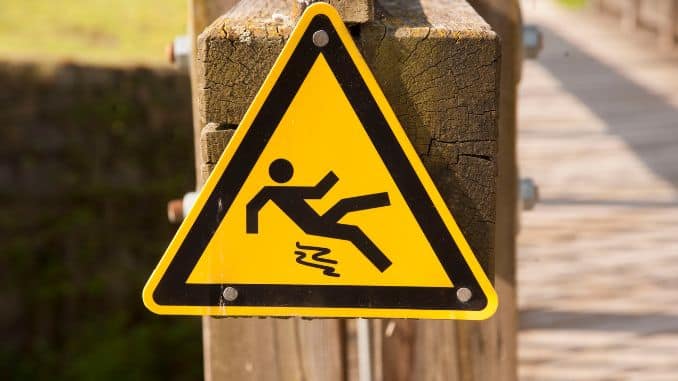
A balanced posterior chain can help prevent injuries, particularly in the lower back and knee areas. It provides stability during physical activities, reducing the risk of strains, sprains, and overuse injuries.
5. Functional Movement
The posterior chain, a group of muscles running along the back of your body, is integral to the mechanics of everyday movements, such as standing, walking, and bending. These muscles, which include the lower back, glutes, hamstrings, and upper back, play a significant role in stabilizing your spine and facilitating proper posture. By ensuring the strength and functionality of your posterior chain, you enhance your ability to engage in these activities efficiently and comfortably, contributing to overall well-being and a reduced risk of pain and discomfort.
6. Balance and Stability
The posterior chain, encompassing muscles in the lower back, glutes, hamstrings, and upper back, is crucial for maintaining body stability and balance, particularly during activities that demand a strong sense of equilibrium, such as walking on uneven surfaces. These muscles work in tandem to provide the necessary support and counterbalance that ensures you stay upright and avoid falls or injuries. Therefore, strengthening and conditioning weak posterior chains are beneficial for functional movements and enhancing your ability to navigate challenging terrains with confidence and reduce risk of imbalance.
7. Metabolic Benefits

Exercises like deadlifts and squats can increase muscle mass and metabolism, helping with weight management and overall health.
8. Enhanced Posterior Aesthetics
Many people also value the aesthetic benefits of a well-developed posterior chain, as strong glutes and hamstrings contribute to a toned and shapely appearance.
9. Bone Health
Weight-bearing exercises that specifically target the posterior chain have the potential to boost bone density and greatly reduce the likelihood of osteoporosis. Such exercises, including squats and deadlifts, stress the bones and stimulate the body to build stronger and denser bone tissue. This may offer significant advantages, especially for individuals who are at risk of or concerned about osteoporosis, as it contributes to improved bone health and overall well-being.
10. Overall Functional Fitness
A strong posterior chain is a cornerstone of functional fitness, allowing you to perform a wide range of activities with greater ease and reduced risk of injury.
Incorporating posterior chain exercises into your fitness routine can help you realize these benefits and maintain a balanced, healthy, and functional body.
Best Progressive Posterior Chain Exercises
Here are the best posterior chain workouts to strengthen your posterior chain muscles:
1. Weighted Pull Throughs
Weighted pull-throughs are a dynamic exercise that targets the glutes and hamstrings. This movement enhances strength, athleticism, and overall physique by using weights.
a. 4-Point Position
For this posterior chain exercise, utilize a kettlebell or dumbbell.
Begin in a 4-point position on the floor with your hands beneath your shoulders and your knees under your hips. Hold a kettlebell in one hand. Engage your core and drag the kettlebell under your supporting arm. Return to the starting position and repeat the movement on the opposite side. Complete 2 to 3 sets of 8 to 10 repetitions.
Depending on your comfort level, perform this movement either in a Straight-Arm Plank or Plank from Knees position
 |
 |
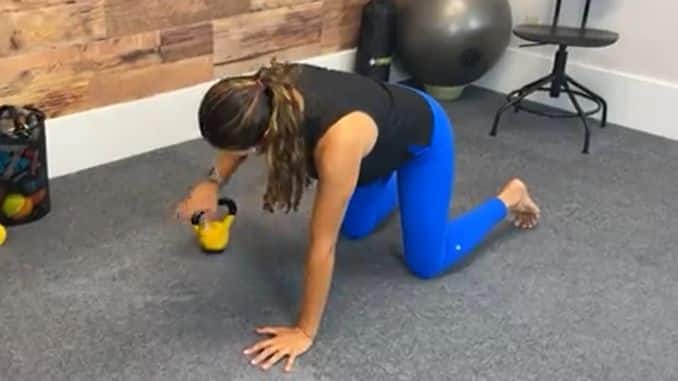 |
b. Bear Crawl Position
For this posterior chain exercise, utilize a kettlebell or dumbbell.
Begin in a 4-point position on the floor with your hands beneath your shoulders and your knees under your hips. Hold a kettlebell in one hand. Tuck your toes under your heels, pressing your weight into your toes to lift your knees off the floor while keeping your back flat. Engage your core and swing the kettlebell underneath your body. Return to the starting position and repeat this movement. After several repetitions, perform the movement on the opposite side.
 |
 |
 |
2. Glute Bridges
Glute bridges are a simple yet highly effective exercise for strengthening and toning the glute muscles. These exercises are an essential addition to any workout routine.
a. Standard Glute Bridges
Lie on your back on the floor with your knees bent and your feet flat on the floor, hip-width apart. Relax your arms at your sides with your palms facing downward. Contract your abdominal area, then push from your heels to lift your hips. Hold this position for several deep belly breaths, in through your nose and out through your mouth. Relax and return to the starting position.
Complete the movement with 2 to 3 sets of 8 to 10 repetitions.
 |
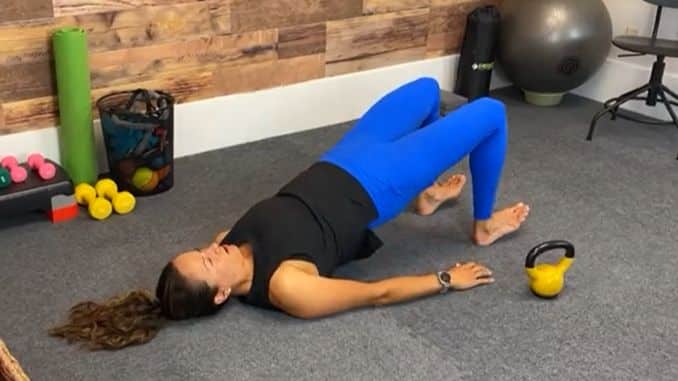 |
b. Glute Bridge Leg Extensions
Lie on your back on the floor with your knees bent and your feet flat on the floor, hip-width apart. Relax your arms at your sides with your palms facing downward. Contract your abdominal area, then push from your heels to lift your hips. Lift and straighten one leg to a 30-degree angle. Hold this position for several deep belly breaths, in through your nose and out through your mouth. Relax and return to the starting position. Repeat the movement on the opposite side.
 |
 |
 |
c. Weighted Glute Bridges
For this exercise, use a kettlebell, dumbbell, or any weighted object for added resistance.
Lie on your back on the floor with your knees bent and your feet flat on the floor, hip-width apart. Hold a kettlebell on top of your belly. Contract your abdominal area, then push from your heels to lift your hips. Hold this position for several deep belly breaths, in through your nose and out through your mouth. Relax and return to the starting position.
Repeat the movement as needed.
 |
 |
d. Glute Bridge with Chest Press
For this exercise, use a kettlebell, dumbbell, or any weighted object for added resistance.
Lie on your back on the floor with your knees bent and your feet flat on the floor, hip-width apart. Hold a kettlebell on top of your chest, then push from your heels to lift your hips upward. Engage your core and extend both arms, lifting the kettlebell towards the ceiling. Lower the kettlebell back down to your chest and repeat the movement.
Complete the movement with 2 to 3 sets of 8 to 10 repetitions.
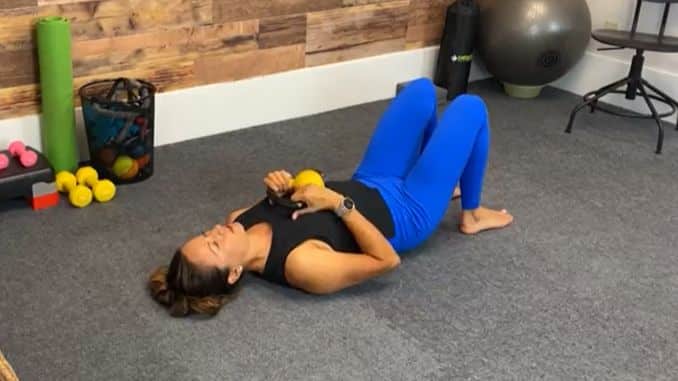 |
 |
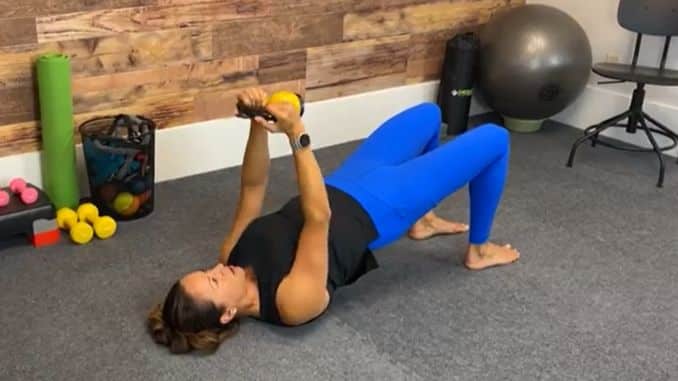 |
 |
10 Benefits of Posterior Chain Workout
Posterior chain exercises are essential for developing the strength and functionality of the posterior chain muscles, including the lower back, glutes, hamstrings, and upper back muscles. These exercises offer numerous benefits for your overall fitness and well-being.
1. Improved Posture

Engaging in regular posterior chain exercises, such as deadlifts and rows, helps enhance the strength of your posterior muscles. This, in turn, promotes better posture, reducing the risk of postural issues and discomfort.
2. Enhanced Strength
The primary goal of posterior chain exercises is strengthening the s, contributing to a balanced and robust physique. These anterior chain exercises target the glutes, hamstrings, and upper back, ensuring comprehensive strength.
3. Reduced Risk of Injury
Strengthening the posterior muscles, particularly the lower back, offers vital support to your spine and pelvis. The increased stability can reduce the likelihood of experiencing lower back and hip injuries and improve spinal alignment during lifting and other movements, reducing the chance of strains and sprains.
4. Best Posterior Chain Exercises
Deadlifts, Romanian deadlifts, glute bridges, hyperextensions, rows, and pull-ups are among the most impactful posterior chain exercises. Including these exercises in your workout regimen can enable you to maximize the advantages of developing strength in your posterior chain.
5. Better Athleticism
Many sports and physical activities require robust posterior chain muscles for running, jumping, and lifting. A well-developed posterior chain can significantly enhance your athletic performance.
6. Increased Metabolism

Posterior chain exercises often involve compound movements that recruit multiple muscle groups, increasing calorie expenditure and boosting metabolism. This is advantageous for weight management and fat loss.
7. Core Strength and Stability
The lower back and glute muscles, part of the posterior chain, play a critical role in stabilizing the core. Strengthening these muscles contributes to a stronger and more stable core.
8. Functional Movement
A strong posterior chain is vital for daily activities like bending, lifting, and carrying objects. Focusing on these muscles can enhance your proficiency in performing these tasks while lowering the chances of injury.
9. Pain Relief
Strengthening the posterior chain muscles can alleviate or prevent lower back pain and discomfort. It can also be beneficial for addressing conditions like sciatica, as the exercises help relieve pressure on the lower back.
10. Aesthetic Benefits
Developing well-defined muscles can enhance your overall physique. It contributes to a more balanced and attractive appearance, giving you a more athletic and proportionate look.
Incorporating the best posterior chain exercises into your fitness routine and gradually increasing the weight and intensity while maintaining proper form can help unlock the full benefits of strong and well-developed muscles.
Tips to Workout Commitment
Here are some ways to your posterior chain muscles workout routine commitment:
1. Set Specific and Achievable Goals

Clearly define measurable goals, such as losing weight or running a race. Specific goals provide purpose and motivation, and achieving them boosts commitment. Adjust goals as needed to stay engaged.
2. Establish a Routine
Establish a regular exercise routine that accommodates your everyday schedule. Consistency builds habits and makes it easier to stick with your plan over time. Include rest days to prevent burnout.
3. Accountability
Partner up or join a fitness group to stay accountable. Exercising with others motivates you to show up and offers social support and enjoyment.
4. Track Your Progress
Use a workout journal or apps to record your progress. Tracking your achievements provides motivation, shows your hard work, and helps set new goals.
5. Reward Yourself
Celebrate your milestones with rewards like a special meal, spa day, or new gear. These incentives make your fitness journey more enjoyable and keep you motivated.
6. Rest and Recovery
Don't underestimate the importance of rest and recovery. Overtraining can lead to burnout and injury. Make sure you get enough sleep and allow your body to recover between workouts.
Remember that dedication to your workout plan is a journey, and there will be ups and downs. It's essential to be patient with yourself and adapt to changes in your life. Celebrate your successes, learn from setbacks, and progress toward your fitness goals.
Summary
The posterior chain exercises are an integral component of any well-rounded fitness routine. They target the muscles along the back of your body, including the lower back, glutes, hamstrings, and upper back. The importance of these exercises cannot be overstated, as they offer many benefits for your overall health and well-being.
By focusing on posterior chain exercises and staying committed to your workout plan, you can enjoy improved posture, enhanced strength and functionality, reduced injury risk, better performance, increased metabolism, and relief from pain. These exercises also contribute to core strength and aesthetics. So, whether you're a fitness enthusiast or looking to improve your overall health, prioritize your posterior chain and maintain your dedication for long-lasting benefits.
Maximize your posterior chain with our top exercises! Strengthen your gluteus maximus and boost stability. Check out our Best Gluteus Maximus Exercises now!






